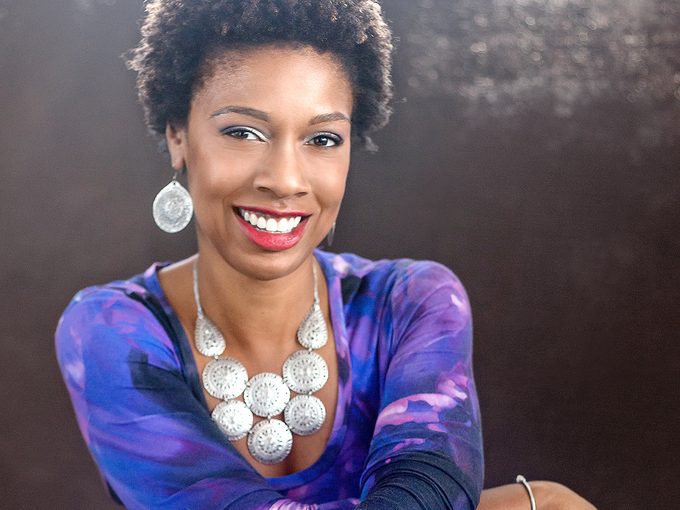Here’s a Bra That Helps You Recognize Breast Cancer Symptoms

Love & Nudes filled a gap in the market for women of colour by offering bras that match diverse skin tones. Now, the brand's newest design can help save lives by teaching people how to recognize breast cancer symptoms.
When you hear the word nude, what colour comes to mind? This is the question Chantal Carter was contemplating nine years ago while working as a wardrobe stylist in Toronto. She had noticed a lack of nude undergarments in darker skin tones—Carter personally was having to paint her bras and panties to match her own skin tone to avoid visible undergarment issues, and she knew this was a challenge for others as well.
Then, an online petition caught her attention: A college sophomore in Ithaca, New York, had succeeded in having Merriam-Webster change the definition of the word “nude” to be more inclusive. The victory fuelled Carter’s desire to fill what she calls “a gaping hole in the market.”
(Related: Waiting Until Age 50 for Mammograms Is Too Late—Especially for Black Women)

“It started with me wanting a nude look under lace clothes and not being able to find it, to wanting to fill the gap for Black women and people of colour with products that represent our needs and what we look like,” she says. In 2017, she launched Love & Nudes, a collection of wire-free, skin-tone-coloured bras in four shades for Black women and women of colour.
After appearing on Dragons’ Den and securing an investment, Carter grew the online sales portion of her brand. Soon, however, she realized that the world was catching on. Competitors were launching more diverse collections, and while that was a step in the right direction overall, Love & Nudes needed more publicity. How could they differentiate themselves?
Breast cancer and Black women
Carter and her team started researching, and quickly found statistics about Black women and breast cancer that were staggering. Black women are more likely than white women to be diagnosed with aggressive breast cancer at a young age, and are more likely to die at a young age from these cancers. They’re also more likely to be diagnosed at an advanced stage. Although Canada does not gather race-based data regarding women and breast cancer, the statistics from the U.S. are clear—and troubling.
“I had no idea that Black women were disproportionately affected by this, and I thought, ‘What can we do? How can we bring more attention to this?’” says Carter. “I wanted to show not only women of colour but everybody what the signs of breast cancer look like on their skin.” Three of the main things to look for are physical lumps, something called peau d’orange (which presents as bumps similar to the skin of an orange peel) and discolouration. It’s the last one that caught Carter’s attention. “It’s not the same for everybody. Discolouration is typically described as red, but that’s for European skin tones. What does it look like on Black women?” she says. “I wanted to give women a visual reference, as well as a tactile one.”
Love & Nude’s Stage Zero collection
Carter worked with Mojola Omole, a Toronto-based journalist and breast surgical oncologist, to develop the Stage Zero Collection: four breast cancer screening training tools that insert into your Love & Nudes bra to mimic the symptoms of breast cancer. This allows women of colour not only to see what discolouration looks like on their skin tone, but also to have a tactile feel of lumps and peau d’orange. The collection is in the prototype stage and Carter is looking for funding.“What I’d like to do is to get these produced and in the hands of the people who need them the most, including at doctors’ offices and educational institutions,” she explains.
Canada’s lowered age for breast cancer screening
The sobering stats also spurred Carter and her team to launch a petition of their own in January 2023 to ask the Ontario Ministry of Health and the Public Health Agency of Canada to lower the age of breast cancer screening nationwide from 50 to 40. (It currently varies by province and risk factors.) This change would affect all women, regardless of race or family history, allowing Black women earlier access to mammograms and potentially leading to earlier diagnosis, which could save lives.
Investment may not be far off, and Carter’s petition did not go unnoticed. While the national guidelines have not yet been updated, the Ontario government announced in October that it is lowering the eligibility age of self-referral for mammograms from 50 to 40 beginning in fall 2024.
“It feels incredible to be a part of a change this major,” says Carter. “It feels like a victory. I feel satisfied that something was able to be done to protect Black women’s lives and to protect people of colour. This is why our voices are so important.”




